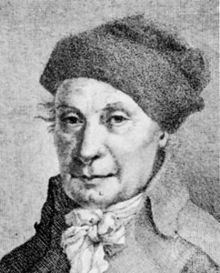Nationality German Name Johann Hedwig Alma mater University of Leipzig Role Botanist | Known for bryology Education Leipzig University Author abbrev. (botany) Fields Botany | |
 | ||
Died February 18, 1799, Leipzig, Germany Books Species Muscorum Frondosorum | ||
Johann Hedwig (8 December 1730 – 18 February 1799), also seen as Johannes Hedwig or Latinised as Joannis Hedwig, was a German botanist notable for his studies of mosses (for which he is sometimes called the father of bryology), in particular the observation of sexual reproduction in the cryptogams.
He was born in Brașov (Kronstadt) in Transylvania, then Hungary, and studied medicine at the University of Leipzig, receiving an M.D. in 1759. He then practiced as a physician for the next twenty years, during which time he pursued botany as a hobby, collecting in the morning before work and then studying his accumulation in the evening. He also acquired a microscope and a small library.
Over time his publications attracted attention, and he eventually achieved both a professorship at Leipzig (first in medicine in 1786, then in botany in 1789), and direction of the Leipzig Botanical Garden.
Skilled at both microscopy and biological illustration, he was able to identify moss antheridia and archegonia. He directly observed the germination of spores and formation of the protonema. He was less successful with other sporophytes, being unable to determine the life cycles of ferns or fungi, but he did make useful observations on the algae Chara and Spirogyra and he made it clear that he was not the first to get new plants from sowing the spores of mosses, C. Meese having done it before him.
His chief work, Species Muscorum Frondosorum was published posthumously, in 1801. It describes nearly all the moss species then known, and is the starting point for nomenclature of all mosses, except for the sphagnum group.
In April, 1788 he was elected a Fellow of the Royal Society. In 1790, he was elected a foreign member of the Royal Swedish Academy of Sciences.
Hedwig is commemorated both by the moss genus Hedwigia as well as a journal Hedwigia.
